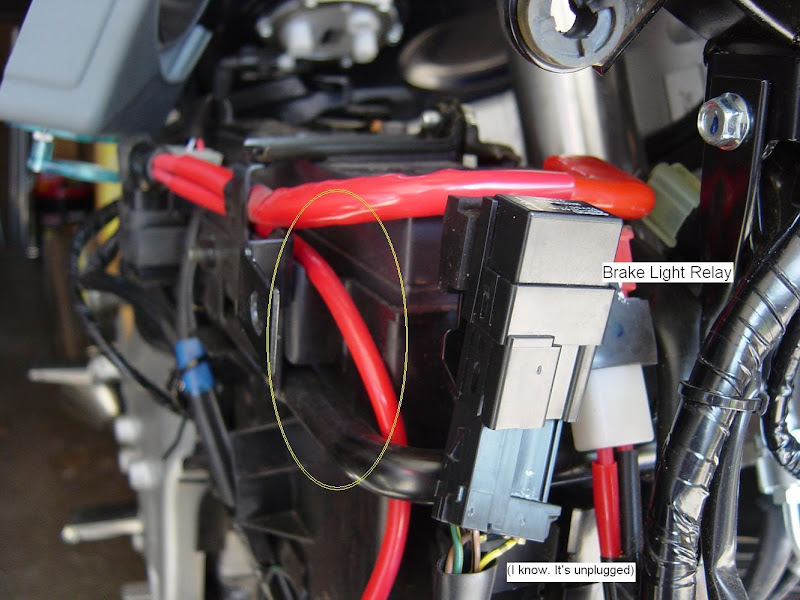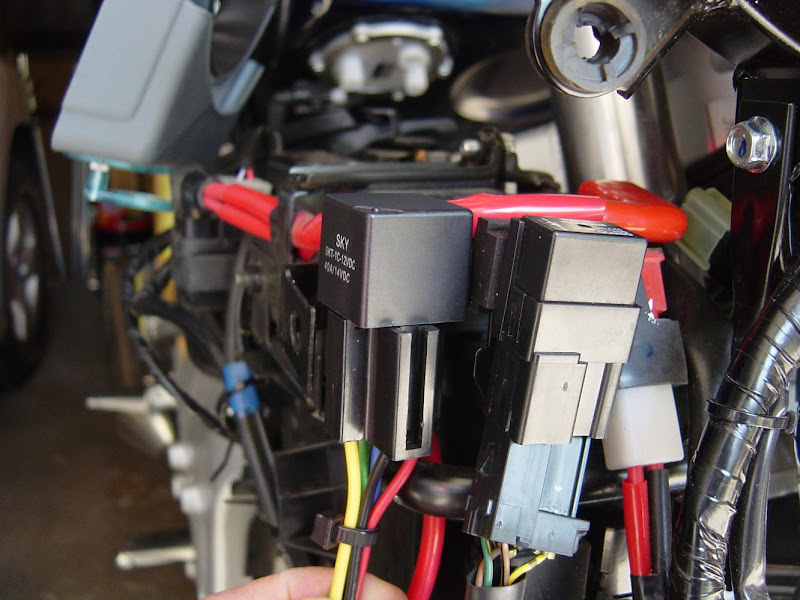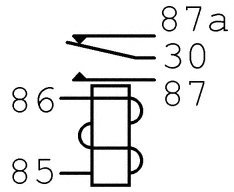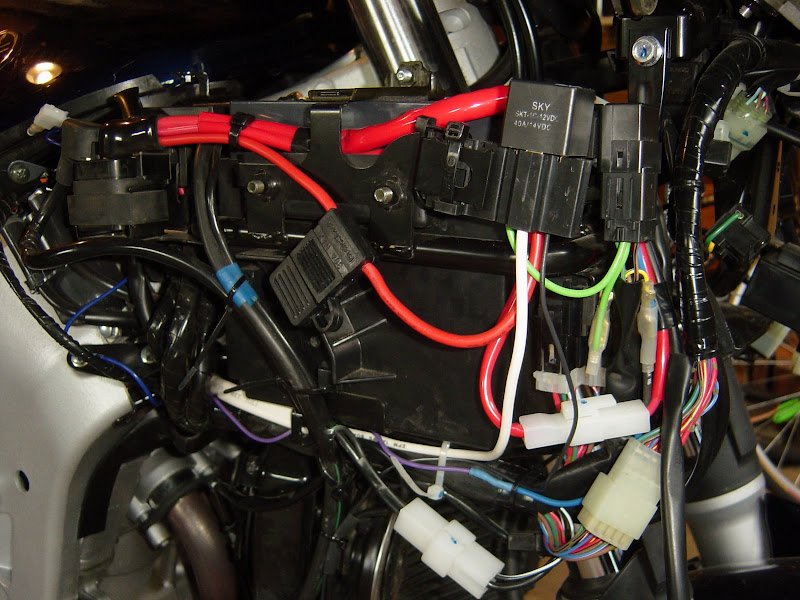Joe2Lmaker
Well-known member
Here's what I'm up to:
I'm adding a relay. I want to position it close to the battery and other relays.
Here's the spot (circled in yellow):

Here's my new relay and harness:

I want to use the power supply to the brake light relay (brown wire) as the switched power, or 86 pin on the relay that I'm adding. It seemed like a simple plan until I looked at the wiring diagram in the Service Manual. Both the front and the rear brake light switches are connected to this relay and the rear brake light switch goes to to ground. I don't see any problems with my plan, but the fact that I don't fully understand the circuit makes me a little nervous.
Then, I had this other idea that as long as I was messing with the brake light relay, I could use the Yellow/Green wire as the brake light connection on my AVCC.
I know how to release the female blade connectors from the harness, so the plan is to use blade tee connectors and heat shrink instead of tapping into the wires.
Please feel free to point out any problems with this plan.
I'm adding a relay. I want to position it close to the battery and other relays.
Here's the spot (circled in yellow):

Here's my new relay and harness:

I want to use the power supply to the brake light relay (brown wire) as the switched power, or 86 pin on the relay that I'm adding. It seemed like a simple plan until I looked at the wiring diagram in the Service Manual. Both the front and the rear brake light switches are connected to this relay and the rear brake light switch goes to to ground. I don't see any problems with my plan, but the fact that I don't fully understand the circuit makes me a little nervous.
Then, I had this other idea that as long as I was messing with the brake light relay, I could use the Yellow/Green wire as the brake light connection on my AVCC.
I know how to release the female blade connectors from the harness, so the plan is to use blade tee connectors and heat shrink instead of tapping into the wires.
Please feel free to point out any problems with this plan.























































